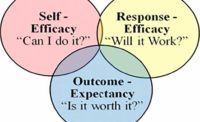First, let's dissect the difference between education and training. Actually, you already know the distinction. Do you want your teenager to receive sex education or sex training? Are you satisfied if your teenager receives only "driver education," or do you prefer some "training" with that education?
Perception problems
Our intuitive understanding of the difference between education and training can actually lead to problems. We might perceive safety training as a step-by-step procedure or program with no room for individual creativity, ownership, or empowerment. This is how safety can come to be seen as a top-down "flavor of the month." If we don't educate people about the principles or rationale behind a particular safety policy, program or process, they might participate only minimally. They'll perceive the program as a requirement rather than an opportunity to make a difference. They might even see themselves as animals in a "circus," well-trained to jump through hoops, rather than as members of a safety community, empowered to go beyond the call of duty for safety.By the same token, safety education without follow-up training will not reap optimal benefits. Learning the theory or principles behind an intervention approach is crucial for customizing procedures for a particular work situation. But after the procedures are developed -- hopefully with input from an educated work team -- training is necessary. People need to know precisely what to do.
Teaching styles are not the same for education and training. When I lecture to large groups of university students or to safety professionals and hourly workers, I use various techniques to maintain attention and get participants involved in the learning process. Perhaps brightly colored overheads or statements written out on a blackboard or flipchart. I might say something extreme to get a contrary reaction, or ask pointed questions and solicit answers from the audience. I'm trying to influence participants' cognitive or thinking processes. This kind of education might increase profound knowledge or critical thinking skills, and this could lead to behavior change. If so, I will have "thought a person into behaving differently." In other words, education targets thought processes directly, and might indirectly influence what people do.
Training targets behavior directly, and might indirectly influence thought processes. This typically calls for more than a lecture format. Training might start by specifying steps needed to accomplish a particular task, but more than this is needed to assure that certain skills or procedures are learned. Participants in a training course should practice the desired behavior and receive pertinent feedback to support what's right and correct what's wrong. If feedback is given genuinely in a trusting and caring atmosphere, behavior might not only be directly improved, but one's thinking or attitude associated with the behavior might be positive. My graduate students and colleagues at Safety Performance Solutions use both education and training to teach safety coaching skills. They start with education, teaching the basic principles behind a behavior-based approach to coaching. Then they use group exercises to implement a training process.
In one small-group exercise, participants develop a brief skit to demonstrate the coaching principles they have learned. For example, one person sets the stage, another person demonstrates safe or at-risk behavior, and a third person gives rewarding and/or corrective feedback. When performed in front of the group, everyone can give feedback on how principles translate into practice. If done right, the feedback from the audience and the educator/trainer improves the performance.
We have also asked groups to first show us the wrong way to coach and then to demonstrate the right way. After the group acts out appropriate safety coaching, the audience can offer supportive and corrective feedback. Usually, the educator/trainer finds opportunities to add to an observer's feedback, and points out how that feedback could have been more constructive. This teaching frequently includes restating the underlying principle or rationale. In this way, education and training go hand-in-hand to maximize real benefits from the learning process.
That's the bottom line here: You'll need a strategic combination of both education and training to improve both behavior and attitude.



